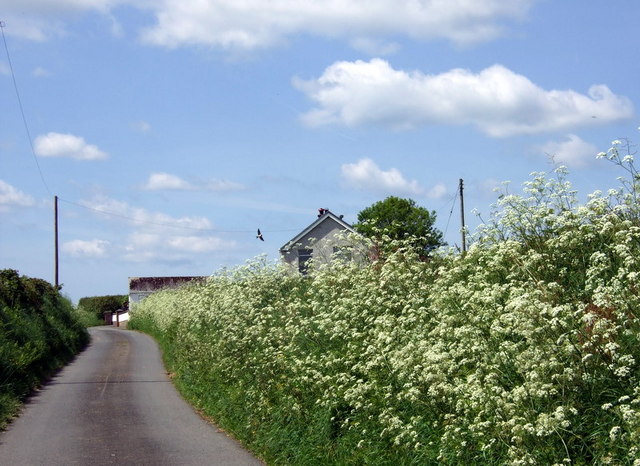Her body is not so white as
anemony petals nor so smooth—nor
so remote a thing. It is a field
of the wild carrot taking
the field by force; the grass
does not raise above it.
Here is no question of whiteness,
white as can be, with a purple mole
at the center of each flower.
Each flower is a hand’s span
of her whiteness. Wherever
his hand has lain there is
a tiny purple blemish. Each part
is a blossom under his touch
to which the fibres of her being
stem one by one, each to its end,
until the whole field is a
white desire, empty, a single stem,
a cluster, flower by flower,
a pious wish to whiteness gone over—
or nothing.
- William Carlos Williams
Queen Anne's Lace: beautiful wildflower, as our greatest nominally-double-barreled poet would have it, or noxious weed, as the United States Department of Agriculture and legion disgruntled farmers contend? Only an overly-lengthy and digression-prone blog post by an Erudite Amateur Scholar can get to the bottom of this troublesome question.

Botanical print of Daucus carota (1885).
Several plants are known by the name of QUEEN ANNE'S LACE (QAL), but it is the humble Daucus carota to which I refer. The plant also is known as: Wild Carrot; Bird's Nest; Devil's Plague; Bee's Nest; Rantipole; Lace Flower; and Bishop's Lace. Strangely, given the royal origin of the name, it is usually only called Queen Anne's lace in our fair anti-monarchical United States.
QAL is a biennal, a plant that germinates, flourishes, and dies within two summers. This life cycle is far less common than that of the annual or perennial. During Year One, it puts out roots and leaves. After overwintering, it flowers and goes to seed during the second summer. Ah! Summer's lease hath all too short a date!
A small colony of Queen Anne's Lace in various stages of bloom
The flower stalk is nigh on a yard (one meter for my non-American and non-Liberian readers) high. The inflorescence, called an umbel, is made up of dozens to hundreds of tiny individual flowers. The flowers are white, with the common exception of a single wine- (or blood-!) colored flower in the center of the umbel, which is used to attract insects.
Daucus carota is not to be confused with the "Philosopher's Bane," the POISON HEMLOCK (Conium maculatum), a biennial both pleasing to the eye and troublesome to the mammalian central nervous system. The two species have similar-looking leaves and flowers, but the expert naturalist can spot that the hemlock has smooth (not hairy) stems and often stands a full yard (1 m.) taller than QAL. But this doppelgangerality shouldn't be a problem unless you use it as a Clif Bar substitute during your nature walk.

Botanical print of the poison hemlock (1897)
But is Queen Anne's Lace good for anything except lookin' perty? Perhaps! The first recorded mention of QAL comes to us from Ancient Greece, land of the Democracy and botanical corporal punishment. The great medical doctor and notorious oath-taker Hippocrates of Kos (c. 460-370 BCE) recommended the seeds as a contraceptive, probably on the advice of Mrs. Hippocrates.
The great Greek physician Hippocrates, whose experiments with and exposure to the wild carrot resulted in premature baldness and a permanent pupil-less, thousand-bēma stare.
Man's fecundity: A sampling of varieties of "Eatin' Carrot" bred from the wild QAL.
Would you believe that QAL, the so-called wild carrot, is, in fact, the hearty natural stock from which our ingenious human ancestors selectively bred the familiar carrot sold by every greengrocer worth his or her greengroceries? Carrots were, at first, cultivated for their leaves, which were used for greens, and their aromatic seeds, which were used for smelling. The cultivated carrot we eat today is the taproot, which, when in its wild state, has a rather unpleasant woodiness, bitterness, and noticeable dearth of orangeness.
Botanical print of the newly-orange carrot (1796)
It was those great orange-loving, botanical-novelty-demanding innovators, the Dutch, who gave the carrot its modern hue in the seventeenth century. This new brand of carrot was sweeter, and perhaps was a tribute to the Dutch royal family the House of Orange, famous for its scions William the Silent, first head of state assassinated with a firearm, and William III of Orange, King of England, first head of state assassinated by a mole.
William the Silent (1533-84), founder of the Dutch House of Orange, in the middle of being assassinated with a pistol, or dood peen.
Anne, Princess of Denmark (1574-1619), wife of James I/VI of England/Scotland (1566-1625, ruled 1567/1603-1625), and mother of Charles I, he of civil warring and regicide-inducing stubbornness. In addition her fondness for botany and lacemaking (notice her collar!), Queen Anne often went on long walks with her five identical dogs (not King Charles Spaniels, bred by her grandson, oddly) as her favorite horse and servant trailed behind at a respectable distance. (See above.)
Our second candidate is Queen Anne of Great Britain (1665-1714, ruled 1702-1714), great-granddaughter of the previous Anne and last of the Stuart line (and sister-in-law of William III of Orange!) to sit on the British throne. When not stuffing her face with carrots, Anne was busy birthing sickly and ill-fated infants, arguing with her best gal-pal Sarah Churchill, Duchess of Marlborough (and ancestress of Winston), and perhaps making lace out of flowers.
No, not THAT Queen Anne's lace!
Well, Dearest Readers, another Cabinet post is drawing to a close, much like the curled-up, birds-nest-like seedhead of Daucus carota. I hope you have come to appreciate the carrot's wild ancestor, majestic biennial and favorite of roadside ditches everywhere.









Another winning post dear chum. I do like the mention of the house of orange, one of my favorite vegetable stories even if it may not be true.
ReplyDelete